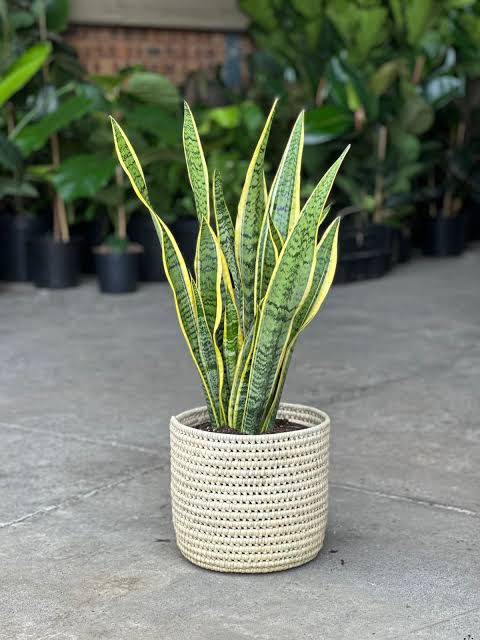The snake plant (also called Sansevieria or mother-in-law’s tongue) is one of the most popular indoor plants around the world. Known for its tall, sword-like leaves and nearly indestructible nature, it’s a favorite among beginners and plant enthusiasts alike.If you’ve ever wondered how to make this hardy houseplant thrive, you’re in the right place. In this guide, you’ll learn how to grow snake plant like a pro — from potting and watering to sunlight and propagation. By the end, you’ll see why this low-maintenance beauty deserves a place in every home.Why Grow a Snake Plant? 🌱Low Maintenance – Requires minimal care, perfect for busy people.Air Purifier – NASA studies show snake plants help filter toxins from the air.Stylish Look – Adds a modern, sculptural vibe to your home decor.Adaptable – Thrives in both bright and low-light spaces.Choosing the Right Snake Plant Variety 🌵There are several types of snake plants, each with its own charm:Sansevieria trifasciata – Classic variety with green leaves and yellow edges.Sansevieria cylindrica – Cylindrical leaves with a sleek, modern look.Sansevieria laurentii – Tall, variegated leaves with striking yellow borders.Dwarf varieties – Compact options ideal for desks or small spaces.How to Grow Snake Plant: Step-by-Step 🌟Step 1: Pick the Right Pot & SoilChoose a pot with drainage holes to prevent root rot.Use well-draining soil (a cactus or succulent mix works best).Step 2: Provide the Perfect LightSnake plants prefer bright, indirect light, but they can also tolerate low-light conditions.Avoid direct harsh sunlight, which can scorch the leaves.Step 3: Watering ScheduleLess is more! Allow soil to dry completely between waterings.Water every 2–4 weeks, depending on your climate.Overwatering is the most common cause of problems.Step 4: Temperature & HumidityThrives in temperatures between 60–85°F (16–29°C).Low humidity is fine, making it perfect for most indoor environments.Step 5: FertilizingFeed with a balanced houseplant fertilizer once a month during spring and summer.Skip fertilizing in fall and winter.Propagating Snake Plants 🌱✨One of the best parts of learning how to grow snake plant is propagation. You can easily multiply your plants with these methods:Leaf Cuttings in Soil – Cut a healthy leaf, let it callous for a day, then plant in soil.Water Propagation – Place cuttings in a glass of water until roots form.Division – Separate root clumps (rhizomes) and repot them individually.Common Problems & Solutions 🚑Yellow Leaves → Usually from overwatering. Let soil dry out.Wrinkled Leaves → Indicates underwatering. Give it a deep soak.Soft, Mushy Base → Root rot. Remove damaged parts and repot in fresh soil.Styling Ideas with Snake Plants 🏡Place a tall variety in a living room corner for a modern touch.Use compact types as desk companions.Group several together for a mini indoor jungle vibe.Conclusion 🌟If you’re searching for a low-maintenance, stylish plant that purifies the air and thrives in almost any condition, the snake plant is the answer. Now that you’ve uncovered the secrets of how to grow snake plant, you’ll see how simple it is to care for and even propagate this resilient beauty.So whether you’re a beginner or a seasoned plant lover, bring one home, and watch it flourish with minimal effort. 🌿💚

